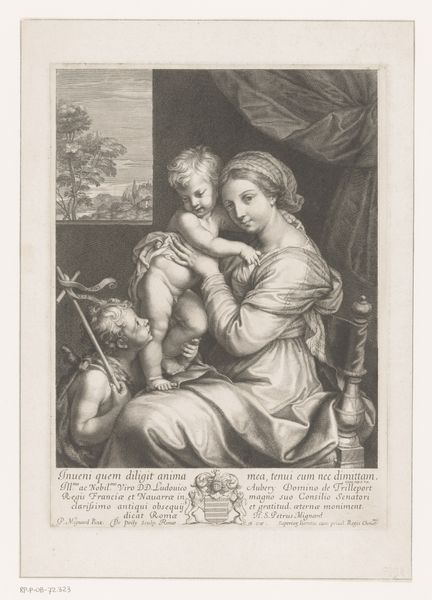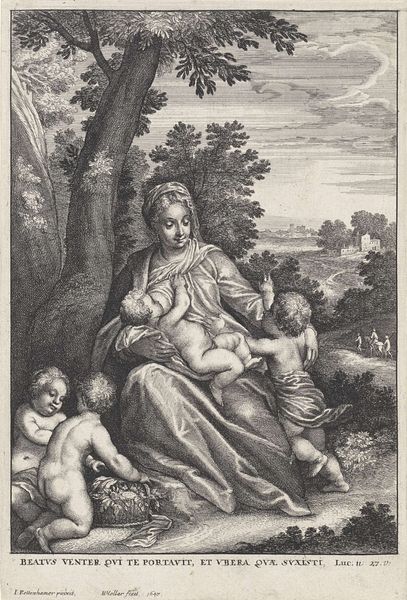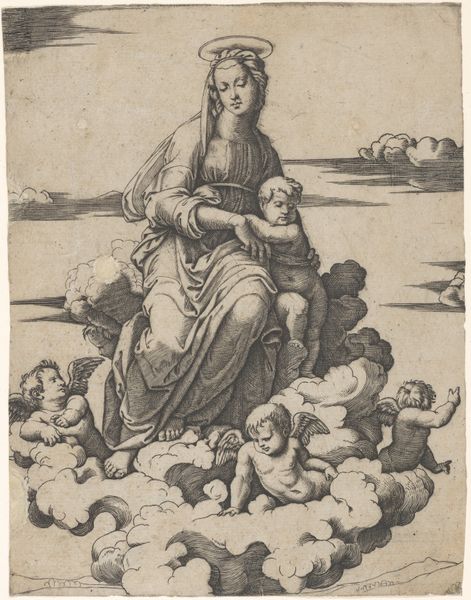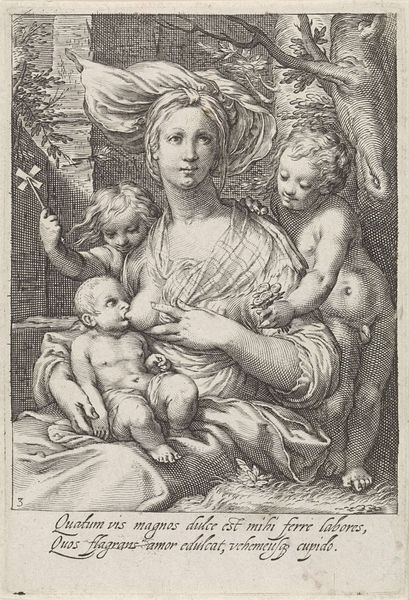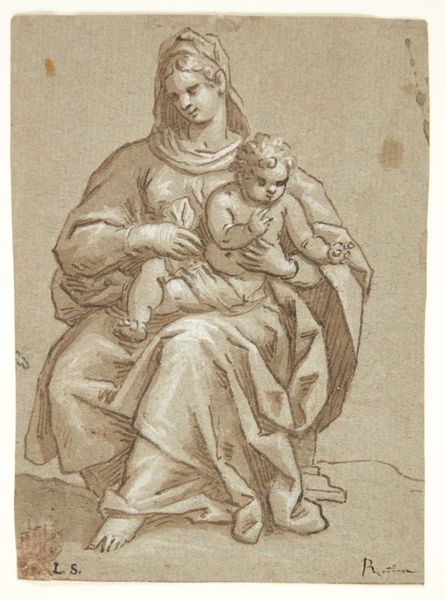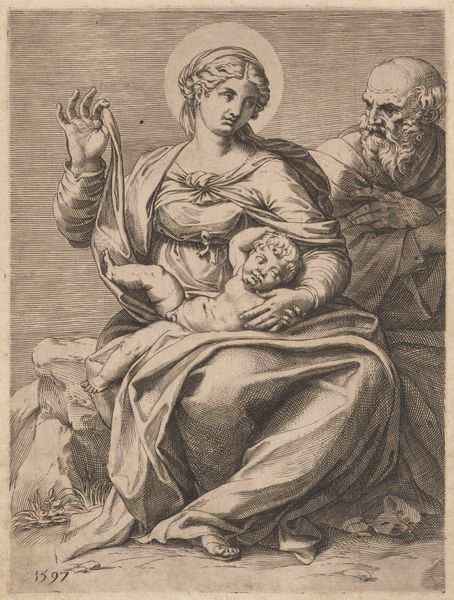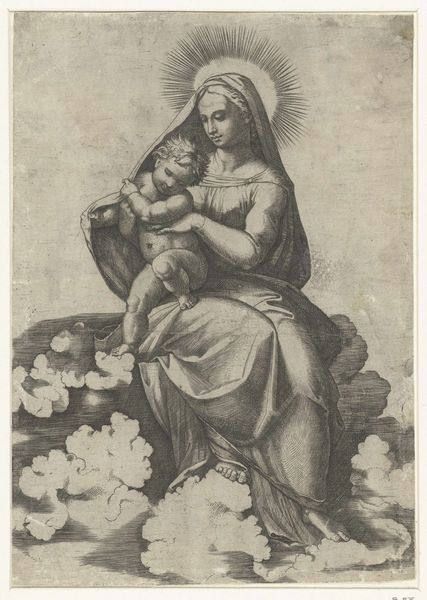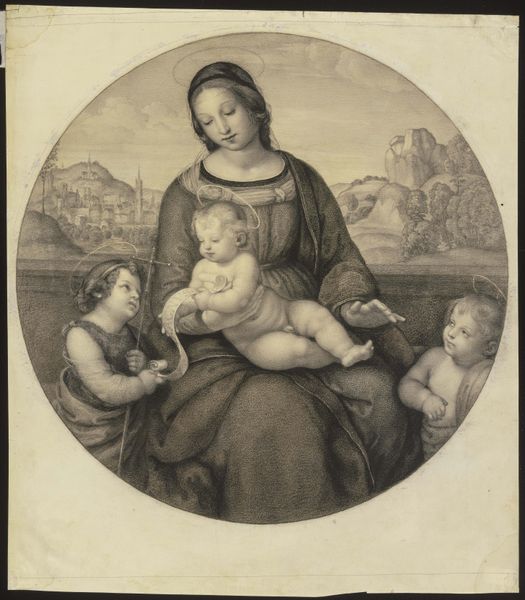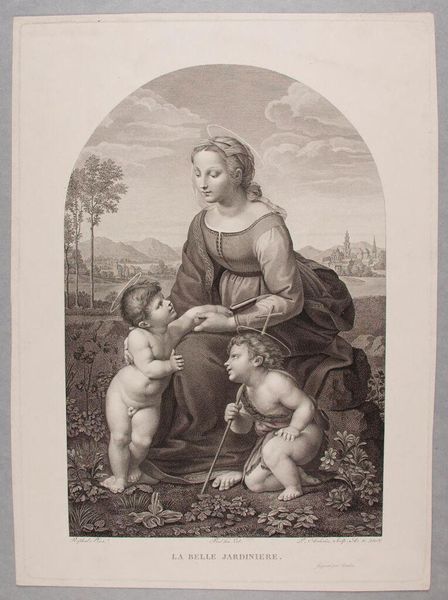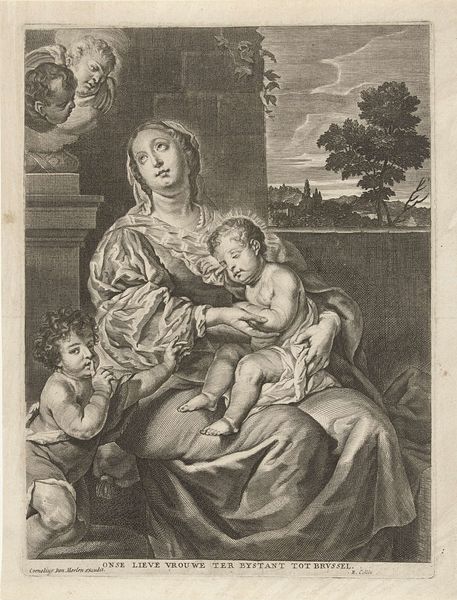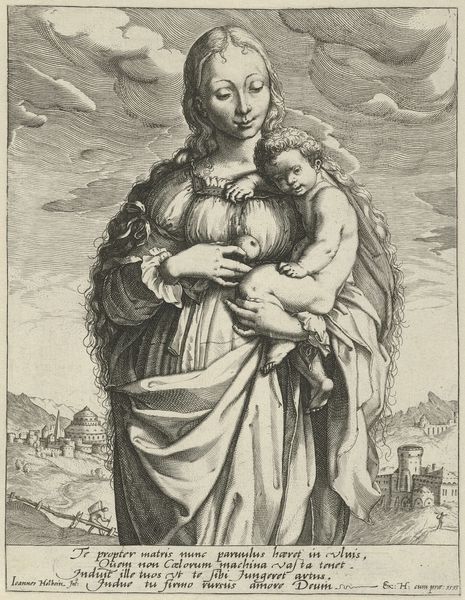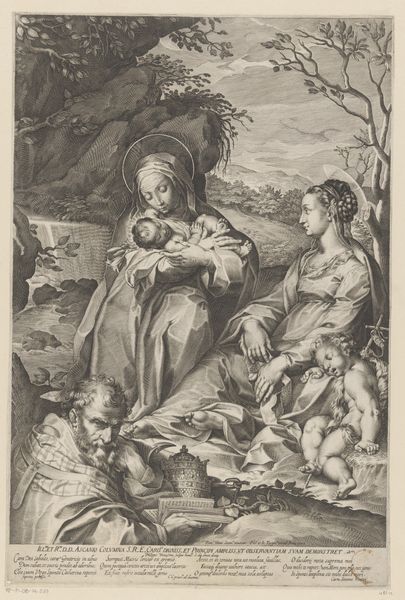
print, etching, engraving
#
portrait
#
baroque
# print
#
etching
#
engraving
Dimensions: height 417 mm, width 271 mm
Copyright: Rijks Museum: Open Domain
Curator: As we move through the Rijksmuseum, I want to draw your attention to this print, "Maria met kind en Johannes de Doper in weidelandschap," made between 1640 and 1644. Gilles Rousselet crafted this work using both etching and engraving techniques. Editor: It has a gentle, almost melancholic feel. The landscape recedes into the distance, while the figures of Mary, Jesus, and John the Baptist seem very present in the foreground. It makes you want to reach out and touch the fine texture of the print. Curator: Yes, the texture achieved through the engraving process is captivating. It’s a prime example of how printmaking served a crucial role in disseminating religious imagery and artistic ideas throughout Europe at that time. Consider the relatively low cost, making the art available to a far wider audience than paintings could reach. Editor: Absolutely. The choice of using both etching and engraving tells a story of process. Engraving is so labor-intensive, each line carefully incised, whereas etching allows for a quicker, more fluid mark. This blend suggests a balance between meticulous craft and expressive freedom. Did Rousselet do it all himself? What kind of workshop produced something like this? Curator: Good questions. These workshops involved a division of labor, but Rousselet was a skilled artist in his own right. His prints played a role in shaping religious beliefs and devotional practices, particularly within domestic settings. The work serves as a beautiful illustration of Counter-Reformation ideals. Editor: And the material tells us more of that story, I imagine this was probably made in multiples; the materiality allows an owner to have its own personal copy, facilitating daily devotion and introspection. Its modest size also speaks volumes; it wasn’t meant to dominate a grand space but rather reside quietly. Curator: Precisely. We should also observe the contrast between the figures in the foreground and the backdrop—a clear statement about the painting conventions of the day and of the need to present the subject clearly and reverentially. It reminds us of the role this piece has played and its wide public availability in those days. Editor: The choice of process and how its accessibility can provide unique perspectives to the era that can be easily be ignored in history books! Curator: Exactly. Looking at the print today, it provides insights that help you picture the political and cultural influence it has produced on that time.
Comments
No comments
Be the first to comment and join the conversation on the ultimate creative platform.

